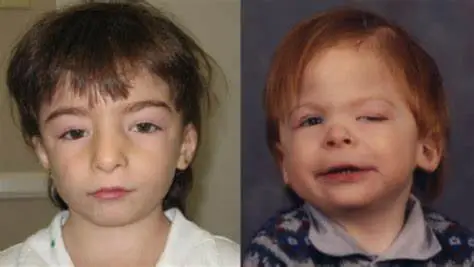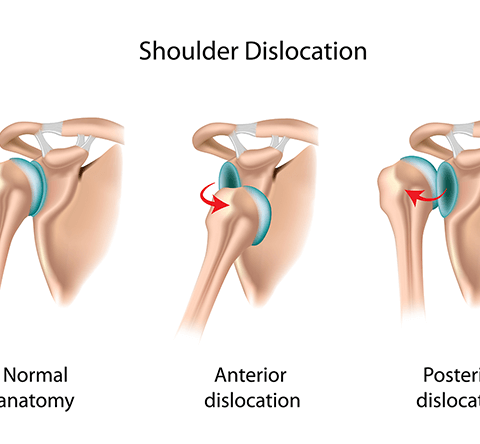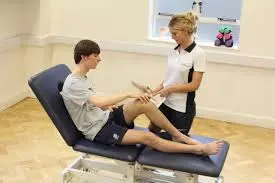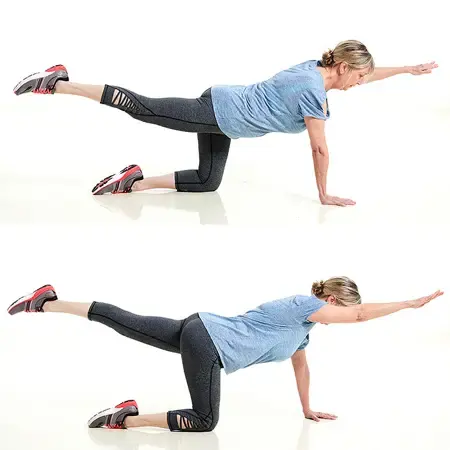Jacobsen Syndrome
What is Jacobsen Syndrome?
Jacobsen syndrome is caused by the deletion of genetic material from chromosome 11. Jacobsen syndrome is also known as 11q terminal deletion disorder because it typically occurs at the end (terminus) of chromosome 11’s long (q) arm.
The indications and symptoms of Jacobsen syndrome vary greatly. The majority of those affected report delayed development of various skills, including speech and motor skills (such as sitting, standing, and walking). Most people have cognitive impairments and learning challenges. Behavioral issues have been documented, including compulsive activity (such as shredding paper), a short attention span, and ease of distraction. Many persons with Jacobsen syndrome have been diagnosed with ADHD.
Jacobsen syndrome is also linked to an increased risk of autism spectrum disorder, which is defined by inadequate communication and socialization abilities.
Jacobsen syndrome is also distinguished by unique facial characteristics. These features include small and low-set ears, widely set eyes (hypertelorism) with droopy eyelids (ptosis), epicanthal folds that conceal the inner corner of the eyes, a broad nasal bridge, downturned corners of the lips, a thin upper lip, and a short lower jaw. Affected people frequently have a big head size (macrocephaly) and a skull anomaly called trigonocephaly, which gives the forehead a pointed look.
More than 90% of people with Jacobsen syndrome have a bleeding disorder known as Paris-Trousseau syndrome. This condition has a lifetime risk of irregular bleeding and easy bruising. Paris-Trousseau syndrome is a platelet disorder that affects the blood cells responsible for blood clotting.
Other Jacobsen syndrome characteristics include cardiac issues, such as underdevelopment of the left side of the heart (hypoplastic left heart syndrome), feeding difficulties in infancy, small stature, frequent ear and sinus infections, and skeletal abnormalities. The digestive system, kidneys, and genitals can all be affected by the condition.
The life expectancy of people with Jacobsen syndrome is unknown, but affected individuals have reached adulthood. Complex cardiac abnormalities are the major cause of mortality in patients suffering from Jacobsen syndrome. Bleeding episodes and infections can potentially be fatal in patients with Jacobsen syndrome.
Causes of Jacobsen Syndrome
Genetic Mutations
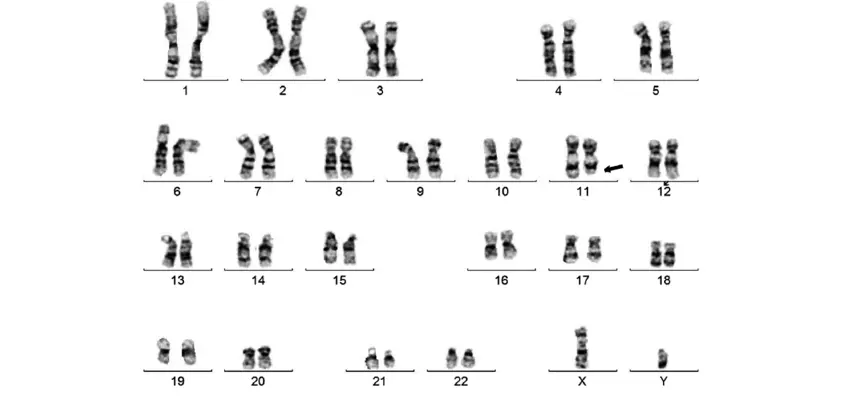
Jacobsen syndrome is caused by genetic mutations, commonly referred to as pathogenic variations. Genetic mutations can be inherited, meaning they are passed on from parents to children, or they can develop at random during cell division. Genetic mutations can also be caused by viruses, environmental factors like UV radiation from sunlight exposure, or a combination of these. Discover more about genetic illnesses at the National Library of Medicine (NLM).
If you suspect you have this disease, start by gathering information about your family’s health history. Other family members who have experienced similar symptoms, when their/your symptoms first emerged, and any exposures to probable disease-causing environmental variables should be reviewed with your medical staff. The Surgeon General’s tool can help you compile your family’s health history.
Chromosomal Changes
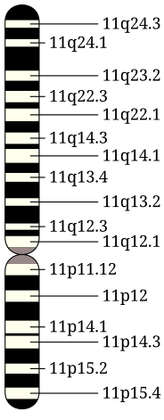
Jacobsen syndrome is caused by a change in the number or structure of a person’s chromosomes. Chromosomes are the structures inside cells that contain all of our genes. People normally have 46 chromosomes, 23 inherited from their biological mother and 23 from their biological father. Most chromosomal alterations occur at random in the sperm or egg, but some changes have been shown to be passed down from parent to child.
Given the documented chromosomal alterations associated with this disease, you should consult with your doctor to determine whether chromosome testing is appropriate for you. Chromosome testing results can confirm or rule out a suspected chromosomal disorder, as well as determine a person’s risk of passing on the condition. Visit the NHGRI website to learn about microarray technology for chromosomal testing, how a karyotype may be used to identify chromosomal abnormalities, and the FISH lab technique for detecting a specific DNA sequence on a chromosome.
Symptoms
Jacobsen syndrome involves a wide variety of symptoms and physical deformities.
One of the first indicators that parents may notice is abnormally sluggish growth, both in the womb and after birth. Many people with Jacobsen syndrome will be shorter than usual for their mature height. They may also have macrocephaly, which refers to a larger-than-average head size. Trigonocephaly is an additional prevalent symptom.
Other physical indicators include specific facial characteristics. This includes:
- Wide-set eyes with drooping eyelids
- Characteristics include small ears
- a large nose
- downturned corners of the mouth
- a small lower jaw
- a thin upper lip
- and skin folds covering the inner corners of the eyes
Many persons with Jacobsen syndrome will experience cognitive impairment. This can lead to delayed development, including the acquisition of speech and motor abilities. Some infants will have trouble feeding. Many people will have learning difficulties, which can be severe.
Behavioral problems are also symptoms of Jacobsen syndrome. These may be linked to compulsive behavior, quick distraction, and a short attention span. Many of our patients have both Jacobsen’s syndrome and ADHD. It is also associated with autism.
Diagnosis
Jacobsen syndrome can be difficult to diagnose in some instances. This is due to the fact that it is an uncommon and inherited disorder.
In genetic testing, magnified chromosomes are examined under a microscope. They’re discolored to give them a “barcode” appearance. The broken chromosome and deleted genes will be apparent.
Jacobsen syndrome can be diagnosed when pregnant. If an ultrasound detects something abnormal, more testing may be performed. A blood sample can be taken from the mother and tested.
Can Jacbosen syndrome result in complications?
Many serious problems can arise from Jacobsen syndrome.
Learning impairments affect around 97% of people with Jacobsen syndrome. These learning challenges are usually modest to moderate. They can be severe.
Bleeding problems are a hazardous yet common complication of Jacobsen syndrome. Approximately 88% of infants born with Jacobsen syndrome also have Paris-Trousseau syndrome. This is a bleeding ailment that causes you to bruise easily or bleed profusely. This can increase your risk of internal bleeding. Even nosebleeds or blood tests might result in significant blood loss.
Complications involving the heart are also prevalent. Heart issues affect about 56% of newborns with Jacobsen syndrome. Some of them will require surgery to be treated. Approximately 20% of children with Jacobsen will die from heart issues before the age of two. The most common cardiac defects are:
- Heart defects consist of perforations between the left and right bottom chambers.
- Anomalies on the left side
- Hypoplastic left heart syndrome, which disrupts blood flow.
Kidney problems include:
- having a single kidney
- two ureters (tubes connecting the kidneys to the bladder)
- hydroneprosis or the swelling
- cysts
Infants with this disease frequently experience gastrointestinal issues. Pyloric stenosis produces severe vomiting due to a constricted or obstructed exit from the stomach to the intestines. Other typical issues include:
- blocked or narrowed anus
- constipation
- intestinal obstruction
- missing GI tract pieces
- aberrant gut placement
Many children with Jacobsen have vision problems, however many of these difficulties can be cured. Certain children will get cataracts.
Because some children with Jacobsen syndrome are immunocompromised, they may be more vulnerable to infections. Ear and sinus infections are extremely prevalent. Some youngsters will have serious ear infections and may lose their hearing.
Treatment of Jacobsen Syndrome
There is currently no therapy for Jacobsen syndrome, but the symptoms can be managed. 56% of Jacobsen syndrome children have congenital cardiac problems; to keep them under control, a paediatric cardiologist can do an electrocardiogram or echocardiography as a baseline evaluation. Any issues discovered can then be resolved.
Almost all affected children are born with a bleeding disorder; monthly CBT may alleviate the issue. Consecutively. Platelet transfusions and ddAVP can be performed.
Medication that interferes with platelet count should be avoided, and oral contraception may be considered for women who experience severe bleeding during menstruation.
Children with Jacobsen syndrome have severe to moderate intellectual impairments and cognitive impairment.
A neuropsychologist or a behaviour specialist, such as a psychiatrist or psychologist, can conduct an evaluation, which may include brain imaging such as MRI or ERP. Intervention programs can then be implemented as needed.
Music therapy is extremely effective for language development. Vision and hearing examinations, depending on age, can help with cognitive difficulties. For behavioral issues such as ADHD, medication or treatment are required, but a combination of both is more successful.
To cure eye defects, visit an ophthalmologist. Play and interactive activities help children to speak. Habilitation in children should begin at a young age.
A rehabilitation team consists of experts who specialize in how impairment impacts daily life, health, and development. The entire family is assisted in order to help affected children and their families adjust more effectively.
Physiotherapy Treatment
Jacobsen syndrome (JS) is a chromosomal condition in which children experience global developmental delays, including delayed motor and speech milestones.
As a result, they should be sent to physical and/or occupational therapists for early intervention to address the motor developmental delay.
Bobath’s technique is based on observation of the child and a desire to find the best way to overcome the motor delay.
Each youngster should be evaluated based on their specific movement expression and potential for maximum movement efficiency.
Treatment cannot be repetitious or stereotyped since it must constantly adapt to the individual’s advancement.
The Bobath approach is a goal-oriented and task-specific idea that seeks to modify both the internal and external environments so that the individual and nervous system can perform efficiently and effectively.
Integrating play into neurodevelopmental treatment (NDT) has been shown to have numerous benefits in treating developmental delays. It enhances cognitive and perceptual abilities and serves as a stimulant for typical movement patterns by offering appropriate activities.
Children’s response to activity is crucial for a successful play activity. That involves:
Changing the shape, size, and consistency of the employed material. Changing the procedure and regulations of the play activity. Adjusting the position of the materials and the child. Controlling the level of interpersonal interaction. If the motor demand is high, the cognitive demand must be reduced to accommodate the child’s changing needs.
Intensive Neurodevelopmental Treatment (Bobath Approach) Three times weekly, 60 minutes per day, for three months, is advised since it indicates improved gross motor function and higher compliance than standard NDT.
Summary
Jacobsen syndrome is a rare chromosomal disorder caused by partial deletion of the long arm of chromosome 11. It is distinguished by intellectual incapacity, delayed development, and unique facial characteristics. The disorder affects around one out of every 100,000 babies and is more commonly diagnosed in girls than in boys.
Common physical characteristics of Jacobsen syndrome include a small head (microcephaly), widely spaced eyes (hypertelorism), drooping eyelids (ptosis), and a broad nasal bridge. Many patients also have heart defects, bleeding disorders due to platelet abnormalities, and skeletal abnormalities. Cognitive impairments range from mild to severe, with most affected individuals experiencing some degree of intellectual disability and speech delays.
Diagnosis of Jacobsen syndrome typically involves genetic testing, including chromosome analysis and more specific molecular genetic tests. Treatment is primarily supportive and focuses on managing individual symptoms through a multidisciplinary approach. This may include special education, speech and physical therapy, cardiac care, and hematological management. While there is no cure for Jacobsen syndrome, early intervention and appropriate medical care can significantly improve the quality of life for affected individuals.
FAQs
How is Jacobsen syndrome diagnosed?
Diagnosis typically involves genetic testing, including chromosome analysis and more specific molecular genetic tests. Physical examinations and medical history also play a role in the diagnostic process.
Is there a cure for Jacobsen syndrome?
There is currently no cure for Jacobsen syndrome. Treatment focuses on managing individual symptoms and providing supportive care to improve quality of life.
What kind of treatment do individuals with Jacobsen syndrome receive?
Treatment is multidisciplinary and may include special education, speech and physical therapy, cardiac care, and hematological management. The specific treatments depend on the individual’s symptoms and needs.
What is the long-term outlook for individuals with Jacobsen syndrome?
The long-term outlook varies depending on the severity of symptoms. While affected individuals will likely require lifelong support, early intervention, and appropriate medical care can significantly improve their quality of life and help them reach their full potential.
References
- Orphanet: Jacobsen syndrome. (n.d.). https://www.orpha.net/en/disease/detail/2308
- Gotter, A. (2017, July 9). Jacobsen Syndrome. Healthline. https://www.healthline.com/health/jacobsen-syndrome#coping-and-support
- Jacobsen syndrome | Getting a Diagnosis | GARD. (n.d.). https://rarediseases.info.nih.gov/diseases/307/jacobsen-syndrome/diagnosis
- Jacobsen syndrome: MedlinePlus Genetics. (n.d.). https://medlineplus.gov/genetics/condition/jacobsen-syndrome/#resources
- Vastralphysiotherapyclinic. (2023, September 10). JACOBSEN SYNDROME. Mobility Physiotherapy Clinic. https://mobilephysiotherapyclinic.net/jacobsen-syndrome/

